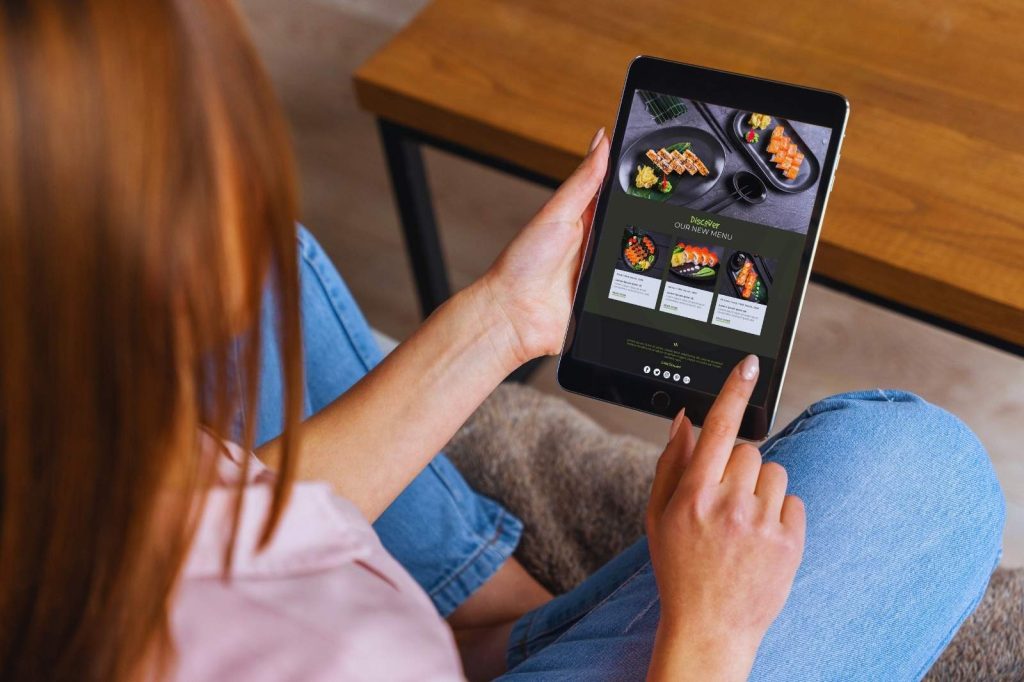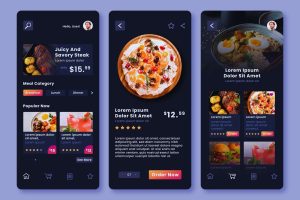In the digital era, a restaurant menu is no longer just a list of dishes — it’s a sales and experience tool.
A well-designed digital menu can increase the average ticket size, enhance the customer experience, and optimize business operations.
With more than 15 years of experience integrating strategy, technology, and digital marketing in Colombia, Digisap has helped restaurants in Bogotá, Medellín, Cali, and Barranquilla transform their traditional menus into interactive digital platforms that not only inform but also sell — better and faster.
1. The challenge: digital customers expect more than a simple menu
Consumer habits have changed.
Today’s diners use their phones to check reviews, photos, prices, and experiences before choosing where to eat.
This means your digital menu shouldn’t just display items — it should communicate your brand’s essence and guide customers toward a purchase decision.
A poorly structured or visually confusing menu can reduce sales by up to 25%.
That’s why successful restaurants invest in intuitive design, appealing visuals, and UX (user experience) strategies that turn menus into marketing tools.
2. Benefits of having a strategic digital menu
A digital menu doesn’t just make browsing easier or reduce physical contact — it’s a conversion engine.
When implemented strategically, it offers advantages like:
- Higher average ticket value: automatic suggestions for sides or drinks.
- Instant updates: change prices, availability, or promotions in seconds.
- Modern and sustainable experience: ideal for innovative, eco-conscious restaurants.
- Integrated analytics: track which dishes are most viewed or best-selling.
- Personalization: show options by time of day, season, or customer profile.
Digisap develops digital solutions that combine design, usability, and analytics to drive sales and optimize operations for restaurants of all sizes.
3. Success stories in Medellín: when design sells
Sibari Restaurante
Sibari implemented an interactive digital menu designed by Digisap, featuring professional photography, personalized recommendations, and direct integration with its reservation system.
Result: a 32% increase in average ticket value and a 20% reduction in service time.
Restaurante Etro
Etro launched a digital menu with visual storytelling, highlighting local ingredients and the story behind each dish.
With integrated metrics, the restaurant identified its most profitable dishes and adjusted its strategy, achieving a 40% increase in flagship product sales.
La Makha
La Makha transformed its traditional menu into a digital sensory experience with high-resolution images and easy QR-based navigation at every table.
It also added language options and pairing suggestions.
In three months, it achieved a 25% increase in social media recommendations and improved its brand perception of innovation.

4. Common mistakes when creating a digital menu
Focusing only on visual design
Design matters, but what truly sells is strategic structure — how dishes, prices, and recommendations are presented.
Not optimizing for mobile
More than 80% of users view menus from their smartphones. If it’s not mobile-friendly, you lose half of your potential customers.
Ignoring cross-selling opportunities
A good digital menu suggests drinks, desserts, or combos. Neglecting this means losing revenue potential.
Not measuring results
Without integrated analytics, it’s impossible to know which dishes attract more attention or need better placement.
Digisap implements performance dashboards that enable data-driven decisions.
5. Practical strategies to design a digital menu that boosts sales
- Define a clear navigation structure: organize items by intuitive categories (starters, mains, drinks, desserts).
- Use professional photography: dishes should look appetizing and consistent with your brand identity.
- Apply neuro-marketing principles: visually highlight your most profitable or popular items.
- Incorporate storytelling: include brief descriptions that evoke emotions and sensory experiences.
- Integrate analytics and automation: track visits, clicks, and conversions to continuously optimize your menu.
- Request a free diagnosis with Digisap to create a strategic digital menu that increases your sales.
FAQ: Frequently asked questions about digital menus for restaurants
1. What is a digital menu?
It’s an interactive version of a traditional menu, accessible via mobile devices or screens, showing dishes, prices, photos, and promotions dynamically.
2. Why does a digital menu increase sales?
Because it simplifies customer choices, highlights profitable products, and creates a modern, reliable experience.
3. Can it be personalized by customer type or language?
Yes. Digital menus developed by Digisap can adapt to languages, schedules, or customer profiles, optimizing the experience.
4. Is implementing a digital menu expensive?
No. There are scalable solutions depending on restaurant size — and the sales benefits quickly offset the investment.
5. How does Digisap help in this process?
By designing attractive digital menus integrated with analytics, automation, and local SEO — maximizing conversions and improving your restaurant’s online visibility.
An attractive digital menu doesn’t just inform — it sells, inspires, and builds loyalty.
When designed strategically, it becomes your restaurant’s most effective marketing tool.
With more than 15 years of experience integrating strategy, marketing, and technology, Digisap helps restaurants in Medellín, Bogotá, Cali, and Barranquilla transform their menus into interactive digital experiences that drive sales.
Request a free diagnosis with Digisap and discover how a digital menu can turn every order into a growth opportunity.





